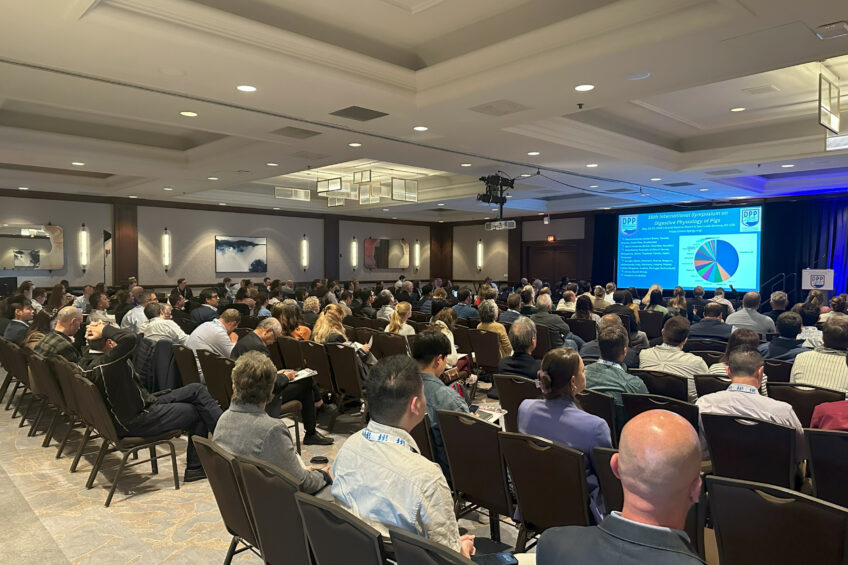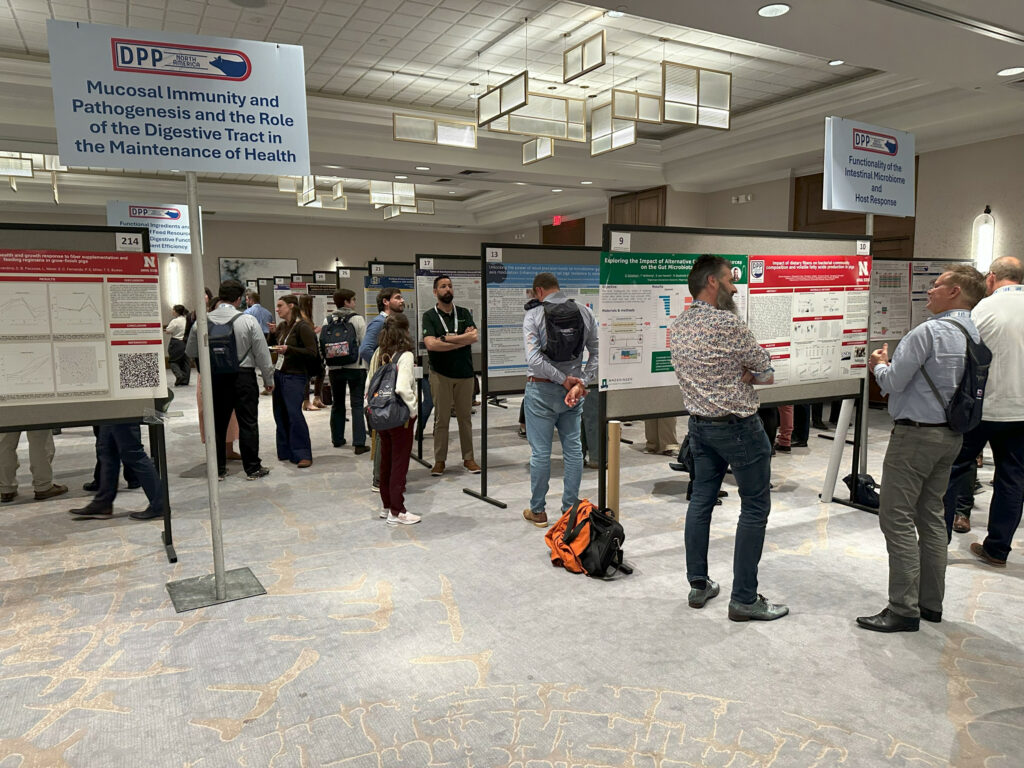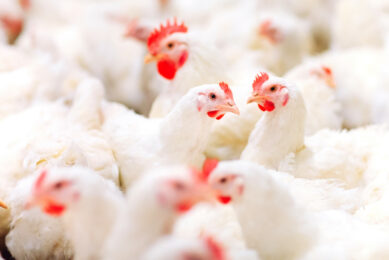DPP 2025: Pig feed strategies for a sustainable future

The 16th edition of the Digestive Physiology of Pigs (DPP) conference drew more than 500 attendees from all over the globe to Lake Geneva, WI, United States, from 20 to 23 May 2025. The event brought together researchers, innovators and industry professionals from across the globe – and offered a comprehensive exploration of swine digestive biology, nutrient interaction and gut health. The insights presented were more than academic – they were strategic.
A unifying theme at the conference was the maturing role of precision nutrition in pig production. Researchers emphasised the need to move beyond traditional performance metrics and instead design diets that influence gut function, immune competence, and environmental impact. “We are no longer just feeding pigs – we are feeding microbes, immune systems and sustainability targets,” said Prof. Dr Benjamin Willing of the University of Alberta, Canada. His work demonstrated how varying protein sources and levels affect intestinal microbiota composition and inflammation markers, suggesting a need for more targeted feeding strategies.
That perspective was echoed in multiple presentations, including that of Dr Qiong Hu, Cargill, USA, who used transcriptomic tools to trace how dietary inputs modulate cytokine expression and immune activity. “Mode-of-action validation through molecular techniques will become a critical piece in product development,” she noted. For feed and additive companies, this signals a clear path: support product claims with omics-based evidence and use biomarker-driven trials to refine formulations.
Environmental efficiency
Perhaps one of the most business-critical messages came from Dr Marie-Pierre Létourneau Montminy, University of Laval, Canada, who quantified the environmental burden of swine diets. According to her data, feed contributes about 60% of the greenhouse gas emissions in pork production. By improving feed digestibility and precision in amino acid formulation, farms could significantly reduce nitrogen excretion and carbon output.
Additives such as high-dose protease and phytase were spotlighted throughout the conference for their role in unlocking nutrient potential while minimising waste. The research by Dr Olufemi Babatunde, Jefo Nutrition, Canada, was a good example. It demonstrated that protease inclusion can reduce the need for overformulation with costly protein sources, offering both a financial and ecological benefit.
Fibre, fermentation and functional synergy
A deeper understanding of fibre fermentation emerged as another major pillar of the conference. Dr Sonja de Vries, Wageningen University & Research, the Netherlands, emphasised the importance of fibre kinetics rather than just levels. Her work showed that soluble fibres with slower fermentation rates promoted more stable gut environments, while highly fermentable sources could lead to excess gas, undesirable metabolites and dysbiosis.
These findings were supported by researchers like Dr Luis Fabà, Trouw Nutrition, the Netherlands, and Yuechi Fu, Purdue University, USA, who outlined how the interaction between fermentable protein and fibre influences gut health through shifts in microbial populations and short-chain fatty acid production. “We need to be formulating for function,” said Dr Fu. “This includes balancing fibre sources to optimise microbial activity without encouraging pathogenic fermentation.”
The practical takeaway for feed companies is the opportunity to differentiate fibre-based products based on fermentation profile, solubility and synergy with enzymes. The gut is not just a site of digestion; it’s a fermentation reactor that needs to be managed with precision.

Creep feeds and early life innovation
Several presentations highlighted the continued challenges of piglet survivability and nursery transition. Research by Dr Zacharia Ng’ang’a from Catalunya’s Institute of Agrifood Research and Technology (IRTA), Spain, explored how sensory-enhanced creep feeds can improve pre-weaning intake and mitigate post-weaning lag. “Palatability is not a luxury – it’s a survival tool,” he explained.
Other presenters, including Dr Timothy Johnson, Purdue University, USA, delved into the evolving field of host-specific probiotics. He noted that “probiotic compatibility is influenced heavily by the early-life microbiome,” suggesting that precision microbial solutions could play a larger role in the future of nursery nutrition.
The implications are clear: early nutrition must be designed not only for growth but also for immune priming and microbial stability. There is growing space in the market for functional creep feeds, flavour systems and targeted nursery-stage solutions.
Research that validates
A key evolution evident at DPP 2025 was the sophistication of research methodology. From gnotobiotic piglets to multi-omics and metabolomics platforms, scientists are now equipped to explore not only what works, but how and why. Presenters like Dr Hervé Blottière, attached to the French Research Institute for Agriculture, Food and the Environment (INRAE), used fibre metabolites as biomarkers for gut health, while others focused on correlating in vitro and in vivo findings to streamline product development pipelines.
The takeaway for industry is unmistakable: validation matters. Claims that were once supported by growth performance alone now require a deeper understanding of biological pathways and host responses. Feed and additive developers will increasingly need to partner with research institutions or invest in internal R&D that mirrors these scientific standards.
Where science meets sales
Translating this science into commercial opportunity is both the challenge and the mandate for businesses. Across the five dominant themes – precision nutrition, environmental efficiency, fibre fermentation, early-life health and research validation – there are concrete ways to position products:
- Sustainability-focused solutions: Offer enzyme packages and protein optimisation tools that align with climate goals and waste reduction.
- Microbiome-based innovation: Develop probiotic and prebiotic combinations tailored to age, diet, and health status.
- Functional fibre products: Differentiate based on fermentation profile, synergistic enzyme inclusion, and measurable gut outcomes.
- Immune-priming nursery diets: Integrate flavour systems and immune modulators for resilience during weaning.
- Validated additive portfolios: Market products with omics-based proof of mode-of-action and safety.
DPP 2025 illustrated that the next generation of swine nutrition will not be won on price or protein level alone. It will be shaped by companies who can back their performance with evidence, align their offering with planetary needs, and speak to producers in the language of both biology and business.
As the industry stands at the intersection of science and strategy, the insights from this year’s conference provide more than knowledge – they offer a map. One that leads not only to better pigs, but a better way of doing business.











